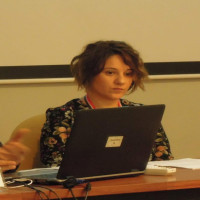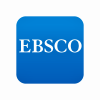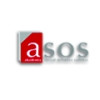Research Article
Aim & Scope
Gaziantep University Journal of Social Sciences (GAUN-JSS) is a double-blind peer-reviewed international academic journal published quarterly (in January, April, July and October). GAUN-JSS is published by the Institute of Social Sciences, Gaziantep University- one of the leading research universities in Turkey. GAUN JSS is an open access journal aiming at the free circulation and distribution of knowledge.
The publication language of our journal is English and Turkish. However, studies in French are also accepted in the field of Law.
- Archeology
- Art
- Business, Economics, International Trade
- Communication
- Geography
- History
- Law
- Literature
- Philosophy
- Political Science and International Relations
- Sociology
- Theology
Author Guidelines
Turkish Title (14-point size)
English Title (14-point size)
Name is NOT written*
Öz
Text, 10-point size, up to 250 words, aligned on two sides There will be no space between the keywords and the Öz paragraph.
Key words: At least three words, Word one, Word two, Word three
Abstract
Text, 10-point size, up to 250 words, aligned on two sides There will be no space between the keywords and the Abstract paragraph.
Key words: At least three words, Word one, Word two, Word three
Introduction
You can use the Journal Body style from the style gallery above in Word for all of your paragraphs. Body text starts right after Öz and Abstract. Body text Times New Roman, 12-point size, aligned on two sides, 1.25 cm space at the beginning of each paragraph.
It is very important. 6nk space between paragraphs. Right click on the "Paragraph" heading in the menu and set 6nk before and after. From the style section above, select the Journal Body style for paragraphs.
If quotations are longer than three lines, they must be written in the block quote style, from the left without quotation marks:
Each quote longer than three lines and / or 40 words must be written in the block quote style, aligned on two sides, all in 1.25 cm inside, 10-point size. A gap of 6nk or 6pt will be found with the text below. (Smith, 1990, pp. 123)
It can be given as Smith (1990). It should be noted that in APA style, page number abbreviation is necessary.
Title Does Not Start with Numbers (1st Level)
Left Justified Header 12-point size Bold Initial Letters Capitalized (2nd Level)
Indented 12-point size bold only first word capitalized (3rd Level)
Indented 12-point size bold italicized only first word capitalized (4th Level)
Indented, italic, first word of head starts with capital letter and other words begin with lower case (5th Level)
Each article sent must contain an Extended Abstract with 750-1000 words. The extended abstract should follow the Turkish and English abstracts and should be in English for the articles written in Turkish, and Turkish for the articles written in English.
When using Tables and Figures, apply the following writing rules.
After the number of the table, put a colon, not a full stop. All explanatory text is 10-point size, title part is bold, the rest is not. Capitalize only the first letter and the proper nouns
Table 1: Table sample
|
|
|
Satır 1 |
|
|
Satır 2 |
|
|
Satır 3 |
|
|
Figures, pictures, graphics and photographs should be placed at the bottom, 10-point size, the title should be bold and the rest should be normal. Leave 6nk space between the figures/ tables and paragraphs.
Figure 1: Gaziantep University Logo
** Failure to comply with publication standards requires automatic denial.
Please note that if more than one author contributed to your work, please be careful when entering the names of the authors. The order of the authors is the order entered by the author (s) when the article is uploaded.
References
Books
In the "References", the surname of the author, the initials of the first name (sometimes the first two names), the year of publication (in brackets), the name of the work, publication information is written separated with full stops. Book names are written entirely in lower case after the first letter of the heading (except for special names) and italicized.
Single author or edited book
Surname of the Author, Initials of the Author's Name. (Year). The title of the book is italic, and after the first letter (except for special names) is entirely in lower case. Place of printing: Publisher. Editor's Last Name, Editor's First Name. (Ed.). (Year). The title of the book is italic, and after the first letter (except for special names) the rest is entirely in lower case. Place of printing: Publisher.
Two or more author or edited books
First Author's Surname, Initials of the First Author's First Name. and Second Author's Surname, Initials of the Second Author's First Name. (Year). The title of the book is italic, and after the first letter (except for special names) the rest is entirely in lower case. Place: Publisher.
Edited or extended editions
Surname of the Author, Initials of the Author's Name. (Year). The title of the book is italic, and after the first letter (except for special names) the rest is entirely in lower case (x / x extended edition). Place of printing: Publisher.
Books without author(s)
The title of the book is italic, and after the first letter (except for special names) the rest is entirely in lower case. (Year). Place: Publisher.
Books consisting of two or more volumes
Surname of the Author, Initials of the Author's Name. (Year). The title of the book is italic, and after the first letter (except for special names) the rest is entirely in lower case (x. volume) Place of printing: Publisher.
Translated books
Surname of the Author, Initials of the Author's Name. (Year). The title of the book is italic, and after the first letter (except for special names) the rest is entirely in lower case. (First Name of Translator's Name, Translator's Last Name, Trans.) Print Location: Publisher.
Compilation Articles
Surname of the Author, Initials of the Author's Name. (Year). The title of the article. The title of the book is italicized and after the first letter (except for special names) the rest is in lower case (pp. page number range). Place of printing: Publisher.
A text or section in compilation
Surname of the Author, Initials of the Author's Name. (Year). The title of the article. The initials of the Editor's Name. The last Name of the Editor (Ed.), The title of the book is italic, and after the first letter (except for special names) the rest is in lower case (pp. page number range). Place of printing: Publisher.
Section or text in the reference books
Surname of the Author, Initials of the Author's Name. (Year). The title of the article. The title of the book is italicized and after the first letter (except for special names) the rest is in lower case (pp. page number range). Place of printing: Publisher.
Example:
Biber, D. (2006). University language: A corpus-based study of spoken and written registers. Amstersam, Philadelphia: John Benjamins.
Cortes, V. (2002). Lexical bundles in freshman composition. In R. Reppen, S. M.
Fitzmaurice and D. Biber (Eds), Using Corpora to Explore Linguistic Variation, 131-145: Amsterdam, Philadelphia: John Benjamins.
Biber, D., Johansson, S., Leech, G., Conrad, S. & Finegan, E. (1999). Longman grammar of spoken and written English. London: Longman.
Articles
For Journal Articles
Surname of the Author, Initials of the Author's Name. (Year, if any month). The name of the article, only the first letter of the first word is small if the rest are not private names. Journal Title is Italic and The First Letters of each Word is capital, Volume Italic (Number), Page Number range. doi: X
Example:
Cortes, V. (2008). A comparative analysis of lexical bundles in academic history writing in English and Spanish. Corpora, 3, 43-57.
Conrad, S. & Biber, B. (2004). The frequency and use of lexical bundles in conversation and academic prose. LEXICOGRAPHICA, 20, 56-71.
Other Resources
Films
Surname of the Director, Initials of the Director's Name. (Director). (Year). Name of the film is italic. Production city: The name of the production company.
Internet resources
Surname of the Author, Initials of the Author's Name. (Date of publication of the manuscript). The name of the article is italicized, only the first letter of the first word is capital, if the rest are not private names they are not capital. Access date: Day Month Year, post link.
Unpublished masters / doctoral dissertations
Surname of the Author, Initials of the Author's Name. (Year). The title of the dissertation is italicized, only the first letter of the first word is capital, if the rest are not private names they are not capital (Unpublished Master / PhD Thesis). Name of Institution, Place of Institution.
Example:
Bal, B (2010). Analyses of Four-word lexical bundles in published research articles written by Turkish scholars. Unpublished Master’s Thesis. Georgia State University, Georgia. Retrieved 5 July 2011 from: http://digitalarchive.gsu.edu/alesl_theses/2
For more detailed information, please, check APA 6th edition.
Ethical Principles and Publication Policy
1. It should be noted that work submitted to GAUN JSS has not been previously published or is not under consideration for publication elsewhere.
It is the author’s responsibility to indicate to the editor the existence of any work already published (or under consideration for publication elsewhere) by the author(s) that is similar in content to the submitted manuscript.
2. All papers should be submitted as MS Windows or OpenOffice compatible word processor files, preferably Word for Windows doc or docx files. Authors should not write their personal information like name, last name, and institution on their manucripts. Personal information should be written in another document and uploaded as a supplementary file.
3. The papers should not be less than 4,000 words, nor should exceed 10,000 words. Abstract should not be more than 250 words.
4. Use British or US English spelling and be consistent within the text.
5. All submissions to GAUN JSS should conform to the requirements of the Publication Manual of the American Psychological Association (6th ed.). Further information can be obtained from the American Psychological Association’s style website: http://www.apastyle.org/.
According to APA’s 6th edition guidelines, please note that DOIs are required in references and can be obtained at http://www.crossref.org/guestquery/.
6. The main body text should be single-spaced, on A4 paper. The margins should be set at 2.5 cm top and bottom, left and right. All sections, including References must have the same width and depth of type page. All text, except mentioned otherwise, i.e. headings, should be justified.
7. Font: Times New Roman. The main body text should be 12 pt type. For quotations longer than three lines, start the quotation on a new line, with the entire quote indented 1,25 cm from the left margin. Use 10 pt type for quotations. Use bold for the title of the article and section headings only. Italics can be used in text for highlighting essential information. Do not underline or boldface to add emphasis. Use italics for emphasis.
8. Please keep to the heading and paragraph styles used by the Journal for your manuscript. For your reference, follow the example indicated in this link Formatted Word File.
9. For every in-text citation in your paper, there must be a corresponding entry in your reference list. APA in-text citation style uses the author's last name and the year of publication, for example: (Field, 2005). For direct quotations, include the page number as well, for example: (Field, 2005, p. 14).
References in the text of an article should be by the author's name and year of publication, as in these examples:
Wilson (1999) in a paper on ... [commonest version]; Wilson and Wild (1997c, p. 22) state that ... [where page number is required]; Evidence is given by Smith et al. (2010) ... [for three or more authors]. Further exploration of this aspect may be found in many sources (e.g. Bright & Snow, 1992; Jones, 1993; Littlewood, 1995a) [note alphabetical order, use of & and semi-colons].
10. For quotations longer than forty words, use a block quotation. Begin the quotation on a new line and indent a half-inch (1.25 cm) from the left margin, leave one empty line above and below. Always give author’s name, year and page number. Do not use quotation marks.
11. Please refrain from using Word’s automated features, for example capitalizing after a period, or adding hyperlinks to internet addresses and e-mail addresses. I.e., http://www.gantep.edu.tr will not be accepted by our editors. Please, double-check to use the correct format: http://www.gantep.edu.tr. You can click on the “Remove Hyperlink” option on the relevant part.
12. Please avoid footnotes and endnotes, if they are unavoidable, they should be included as endnotes at the end of the chapter not footnotes. Number your notes in the text by superscript and indent all lines in the footnote evenly.
13. References should be set out in the alphabetical order at the end of the paper. As with the rest of the manuscript, references should also be in single-space.
14. Only dates should be expressed in numerical terms throughout the text. For example., 1648, 1453, all other quantitative figures should be expressed in letters: not 3 persons, but three persons, or, more than a dozen researchers showed before, not, as more than 12 researchers showed before. Mathematical equations and expressions are not subject to this rule.
15. Figures and tables: All illustrations, photographs, graphics, artwork, and tables can be printed in color or in black-and-white, as long as the author holds the copyright to them. The captions for tables should be located above the table. Figures, artworks, graphics, and photographs should be placed in page margins. Captions must be below the figure.
16. Mathematical equations and expressions should not be copy-pasted as image files. They should be written using the word processor’s relevant options.
17. GAUN-JSS encourages the use of reference management software, like Zotero, Endnote, F1000, etc. However, it is the author’s responsibility to make sure that references are correctly ordered in their submission.
18. Copyright and permissions
It is solely the author’s responsibility to clear permissions for material used in their article for which they are not the copyright owner. This usually includes all extracts over 400 words, figures, tables, photographs, drawings etc. Even very short extracts of poetry may need permission. Please bear in mind that just because text and images can be accessed freely on the Internet, it does not mean they are free of copyright. If in doubt, please contact your commissioning editor before submitting a final manuscript. Gaziantep University Journal of Social Sciences do not accept responsibility for the copyrights. Submission of an article, either via mail, in-person, or through electronic means, implies that the author(s) accept their sole responsibility on the use of material in their submissions.
19. Copyright and permissions of a published article and the open access statement
Gaziantep University Journal of Social Sciences views open-access to academic publications and research as an immutable part of academic endeavor. The journal does not charge for submission, handling, processing, and publication of manuscripts.
All articles published by GAUN-JSS are subject to the Creative Commons Attribution-NonCommercial-ShareAlike 4.0 International (CC BY-NC-SA 4.0) license.
For more information on the conditions of the license please refer to:
https://creativecommons.org/licenses/by-nc-sa/4.0/deed
All published authors accept the conditions of the license.
All copyright, re-publishing and re-using rights, all intellectual property rights, without any exception, belongs to the authors of the published manuscript.
20. The manuscript authors accept to follow editorial board members' decisions and suggestions. The article accepted for publication will receive page proofs for correction. This stage must not be used as an opportunity to revise the text because alterations are costly and will probably result in delay. Speedy return of corrected proofs is important.
Originality and plagiarism policy
All manuscripts are subject to online scrutiny by means of Turnitin. Any paper with a Turnitin score above 15% originality -including references and block quotes- will be rejected barring any further submissions. Manuscripts checked via Turnitin are not submitted to the online repositories. All authors accept their responsibilities and the editorial staff will take further precautions to prevent plagiarism in case Turnitin does not bring yield satisfactory results. Since the Turkish database is limited, we will take other means, including but not limited to Crossref, ithenticate, and/or Google search.
However, 20% threshold does not entail editors' automatic response would be positive, any breach of academic code of conduct, including, but not limited to misquote, misrepresent, and failure to properly cite sources, would end up in rejection and/or extensive revision.
Duties of Editors
Fair play and editorial independence
Editors evaluate submitted manuscripts exclusively on the basis of their academic merit (the importance and contribution of the work, its originality, and the validity of study’s findings and methods, and the clarity of its language) and its relevance to the journal’s scope, without regard to the authors’ race, gender, sexual orientation, ethnic origin, citizenship, religious belief, political philosophy or institutional affiliation. Decisions to edit and publish are not determined by the policies of governments or any other agencies outside of the journal itself. The Editor-in-Chief has complete and unhindered authority over the entire editorial content of the journal and the timing of publication of that content.
GAUN-JSS and its editors are duty bound to evaluate submitted manuscripts only in terms of their academic qualities, i.e., the importance of the submitted work in its own field, the originality of the article, the validity of research, and the clarity of manuscripts. The journal’s academic scope is the only measure in the selection. The authors’ race, gender, citizenship, religious belief, political philosophy and/or institutional affiliation absolutely plays no role in the decision-making process.
Confidentiality
Editors and editorial staff will not disclose any information about a submitted manuscript to anyone but the corresponding author, reviewers, potential reviewers, other editorial advisers, and the publisher. The decision to confer with the aforementioned actors lies solely with the Editor-in-Chief.
Disclosure and conflicts of interest
Editors and editorial board members will not use information contained in the submissions to their own benefits, this includes their research, ongoing work, collaborations, etc. without the open written consent given by the author.
Editors will excuse themselves from pre-reviewing and reviewing manuscripts in which they have conflicts of interest resulting from competitive, collaborative, or other relationships/connections with any of the authors, companies or institutions connected to the papers. If a conflict arises of such nature, the editors will ask another member of the editorial board to handle the manuscript.
Publication decisions
The editors and the publisher formally assure that all submitted manuscripts being considered for publication undergo peer-review by at least two reviewers who are specialists in their field. After the completion of the review process, the Editor-in-Chief is responsible for deciding which of the manuscripts submitted to the journal will be published, based on the validation of the work in question, its importance to researchers and readers, the reviewers’ comments, and such legal requirements as are currently in force regarding libel, copyright infringement and plagiarism. The Editor-in-Chief may get advice from other editors or reviewers in making this decision.
Involvement and cooperation in investigations
Editors, in conference with the Publisher, assures that every reported act of unethical publishing behaviour will be looked into, even if it is discovered years after publication. The journal editors will follow the COPE procedures when dealing with cases of suspected misconduct. After the investigation if an ethical concern is found to be corroborated by actual evidence, a erratum, retraction, expression of concern or other relevant statement will be published in the journal.
Duties of Reviewers
Contribution to editorial decisions
Peer review is the founding mechanism of academic endeavor. Peer review helps editors make decisions in dialogue with authors. Authors gain important insights about their works and find the chance to develop their work by dint of criticism ensconced in the reviewers’ reports and comments.
Promptness
A referee invited for review should immediately report on his/her availability and those who feel unqualified to review the research should inform the editor about their decisions as soon as possible.
Confidentiality
Manuscripts delivered to the referees should be treated as confidential documents. The manuscripts should not be shown to others, nor their contents should be discussed publicly. Only under the explicit authorization by the Editor-in-Chief a reviewer can seek advice from her colleagues. The Editor-in-Chief will give this permission only under exceptional conditions. This rule also concerns the persons who declined to take part in the process as a referee.
Standards of objectivity
Personal critiques oriented towards the manuscripts’ authors is not an appropriate manner of conduct. Reviews should follow an objective procedure in their reports and upon the acceptance of referee duty they accept that their comments are evidently supported by arguments that is of help to the authors in improving their work.
Acknowledgement of sources
Reviewers have a duty to report to the authors any published work that is not part of the authors’ references. A reviewer should pay particular attention to the works in the field that are not cited by the authors, or overlaps between different works. A reviewer should notify the editors regarding similarity with any other previously published work, or other manuscripts they have a knowledge of.
Disclosure and conflicts of interest
Any invited referee who has conflicts of interest resulting from competitive, collaborative, or other relationships or connections with any of the authors, companies or institutions connected to the manuscript and the work described therein should immediately notify the editors to declare their conflicts of interest and decline the invitation to review so that alternative reviewers can be contacted.
Unpublished material disclosed in a submitted manuscript must not be used in a reviewer’s own research without the express written consent of the authors. Privileged information or ideas obtained through peer review must be kept confidential and not used for the reviewer’s personal advantage. This applies also to invited reviewers who decline the review invitation.
Duties of Authors
Reporting standards
Authors of original research should present an accurate account of the work performed and the results, followed by an objective discussion of the significance of the work. The manuscript should contain sufficient detail and references to permit others to replicate the work. Review articles should be accurate, objective and comprehensive, while editorial 'opinion' or perspective pieces should be clearly identified as such. Fraudulent or knowingly inaccurate statements constitute unethical behaviour and are unacceptable.
Data access and retention
Authors may be asked to provide the raw data of their study together with the manuscript for editorial review and should be prepared to make the data publicly available if practicable. In any event, authors should ensure accessibility of such data to other competent professionals for at least 10 years after publication (preferably via an institutional or subject-based data repository or other data centre), provided that the confidentiality of the participants can be protected and legal rights concerning proprietary data do not preclude their release.
Originality and plagiarism policy
Authors should ensure that they have written and submit only entirely original works, and if they have used the work and/or words of others, that this has been appropriately cited. Publications that have been influential in determining the nature of the work reported in the manuscript should also be cited. Plagiarism takes many forms, from "passing off" another's paper as the author's own, to copying or paraphrasing substantial parts of another's paper (without attribution), to claiming results from research conducted by others. Plagiarism in all its forms constitutes unethical publishing behaviour and is unacceptable.
All manuscripts are subject to online scrutiny by means of Turnitin. Any paper with a Turnitin score above 20% originality -including references and block quotes- will be rejected barring any further submissions. Manuscripts checked via Turnitin are not submitted to the online repositories. All authors accept their responsibilities and the editorial staff will take further precautions to prevent plagiarism in case Turnitin does not bring yield satisfactory results. Since the Turkish database is limited, we will take other means, including but not limited to Crossref, ithenticate, and/or Google search.
However, 20% threshold does not entail editors' automatic response would be positive, any breach of academic code of conduct, including, but not limited to misquote, misrepresent, and failure to properly cite sources, would end up in rejection and/or extensive revision.
Multiple, duplicate, redundant or concurrent submission/publication
Papers describing essentially the same research should not be published in more than one journal or primary publication. Hence, authors should not submit for consideration a manuscript that has already been published in another journal. Submission of a manuscript concurrently to more than one journal is unethical publishing behaviour and unacceptable.
The publication of some kinds of articles (such as clinical guidelines, translations) in more than one journal is sometimes justifiable, provided that certain conditions are met. The authors and editors of the journals concerned must agree to the secondary publication, which must reflect the same data and interpretation of the primary document. The primary reference must be cited in the secondary publication.
Authorship of the manuscript
Only persons who meet these authorship criteria should be listed as authors in the manuscript as they must be able to take public responsibility for the content: (i) made significant contributions to the conception, design, execution, data acquisition, or analysis/interpretation of the study; and (ii) drafted the manuscript or revised it critically for important intellectual content; and (iii) have seen and approved the final version of the paper and agreed to its submission for publication. All persons who made substantial contributions to the work reported in the manuscript (such as technical help, writing and editing assistance, general support) but who do not meet the criteria for authorship must not be listed as an author, but should be acknowledged in the "Acknowledgements" section after their written permission to be named as been obtained. The corresponding author should ensure that all appropriate coauthors (according to the above definition) and no inappropriate coauthors are included in the author list and verify that all coauthors have seen and approved the final version of the manuscript and agreed to its submission for publication.
Disclosure and conflicts of interest
Authors should—at the earliest stage possible (generally by submitting a disclosure form at the time of submission and including a statement in the manuscript)—disclose any conflicts of interest that might be construed to influence the results or their interpretation in the manuscript. Examples of potential conflicts of interest that should be disclosed include financial ones such as honoraria, educational grants or other funding, participation in speakers’ bureaus, membership, employment, consultancies, stock ownership, or other equity interest, and paid expert testimony or patent-licensing arrangements, as well as non-financial ones such as personal or professional relationships, affiliations, knowledge or beliefs in the subject matter or materials discussed in the manuscript. All sources of financial support for the work should be disclosed (including the grant number or other reference number if any).
Acknowledgement of sources
Authors should ensure that they have properly acknowledged the work of others, and should also cite publications that have been influential in determining the nature of the reported work. Information obtained privately (from conversation, correspondence or discussion with third parties) must not be used or reported without explicit, written permission from the source. Authors should not use information obtained in the course of providing confidential services, such as refereeing manuscripts or grant applications, unless they have obtained the explicit written permission of the author(s) of the work involved in these services.
Hazards and human or animal subjects
If the work involves chemicals, procedures or equipment that have any unusual hazards inherent in their use, the authors must clearly identify these in the manuscript. If the work involves the use of animals or human participants, the authors should ensure that all procedures were performed in compliance with relevant laws and institutional guidelines and that the appropriate institutional committee(s) has approved them; the manuscript should contain a statement to this effect. Authors should also include a statement in the manuscript that informed consent was obtained for experimentation with human participants. The privacy rights of human participants must always be observed.
Peer review
Authors are obliged to participate in the peer review process and cooperate fully by responding promptly to editors’ requests for raw data, clarifications, and proof of ethics approval, patient consents and copyright permissions.
If a decision is made asking for a "revise and resubmit," authors accept their responsibility in answering the criticism voiced in the reviewer form and should respond to the reviewers’ comments systematically, point by point, and in a timely manner, revising and re-submitting their manuscript to the journal by the deadline given.
Fundamental errors in published works
It is the authors' prerogative to discover significant errors or inaccuracies in their own published work. If such an issue is discovered, the author(s) are expected it is their obligation to promptly notify the journal’s editors or publisher and cooperate with them to either correct the paper in the form of an erratum or to retract the paper. If the editors or publisher learns from a third party that a published work contains a significant error or inaccuracy, then it is the authors’ obligation to promptly correct or retract the paper or provide evidence to the journal editors of the correctness of the paper.
Duties of the Publisher
Handling of unethical publishing behaviour
In cases of alleged or proven scientific misconduct, fraudulent publication or plagiarism, the Graduate School of Social Sciences at Gaziantep University (publisher) will take all necessary measures to clarify the situation and to amend the article in question. This will be done in concordance with the editors of the said issue.
The measures include, but not limited to, an erratum, clarification, and in the most severe case, the retraction of the article. The Graduate School of Social Sciences at Gaziantep University promises to take all necessary precautions to prevent the publication of articles carried through academic misconduct.
Access to journal content
The publisher is committed to the open acces to all academic endeavor and as such, accepts its duty to make published content permanently available and freely accesible by all sections of worldwide academic community. The publisher does not charge any pecuniary fees for processing, submission, and publication of manuscripts. The publisher commits to the free and universal access to its published content in perpetuity.
Archiving and Preservation of Published Work
The publisher via its host providing institution Dergipark uses Lockss for the archiving and preservation of its online content. Our alternative home page, jss.gantep.edu.tr, uses PKP supported Clockss.
Price Policy
Yazarlardan makaleler için başvuru veya değerlendirme ücreti altında her hangi bir ücret alınmaz.
Indexes
Citation Indexes
Other Indexes
Journal Boards
Auto-generated board - Please Edit This Title





Ekşi completed his undergraduate education in the Department of Business Administration at Uludağ University's Faculty of Economics and Administrative Sciences in 1998. He began his academic career as a lecturer at Gaziantep University that same year. He received the title and authority of associate professor in finance in 2014. Appointed to a full professorship in 2020, Ekşi currently serves as the Head of the Accounting and Finance Department of the Department of Business Administration at Gaziantep University. He has published scientific articles in high-impact journals and published books, conferences, and editorials, primarily on banking, the financial system, and sustainability.







I have a master's and doctorate degree from Ankara University. I am currently working as an assistant professor in the Department of Geography at Gaziantep University. I also focus on sub-branches of economic geography such as clusters, industrial zones, innovation and urban economics.








Arapça, İngilizce



Editor-in-Chief
Assistant Editors


Language Editor

Section Editors











Ekşi completed his undergraduate education in the Department of Business Administration at Uludağ University's Faculty of Economics and Administrative Sciences in 1998. He began his academic career as a lecturer at Gaziantep University that same year. He received the title and authority of associate professor in finance in 2014. Appointed to a full professorship in 2020, Ekşi currently serves as the Head of the Accounting and Finance Department of the Department of Business Administration at Gaziantep University. He has published scientific articles in high-impact journals and published books, conferences, and editorials, primarily on banking, the financial system, and sustainability.

I have a master's and doctorate degree from Ankara University. I am currently working as an assistant professor in the Department of Geography at Gaziantep University. I also focus on sub-branches of economic geography such as clusters, industrial zones, innovation and urban economics.




Editorial Board

Arapça, İngilizce
Kadro Bilgileri
Görev Birimi
Turizm Fakültesi / Yiyecek Ve İçecek İşletmeciliği Bölümü / Yiyecek Ve İçecek İşletmeciliği Abd
Kadro Birimi
Turizm Fakültesi / Yiyecek Ve İçecek İşletmeciliği Bölümü / Yiyecek Ve İçecek İşletmeciliği Abd
Öğrenim Bilgileri
Lisans
Gazi Üniversitesi Ticaret ve Turizm Eğitim Fakültesi Turizm İşletmeciliği Eğitimi 1996
Yüksek Lisans
Gazi Üniversitesi Sosyal Bilimler Enstitüsü Turizm İşletmeciliği Anabilim Dalı 1998
Doktora
Gazi Üniversitesi Eğitim Bilimleri Enstitüsü Turizm İşletmeciliği Eğitimi Anabilim Dalı 2004


Prof. Dr. Mehmet Ali Çelikel graduated from Hacettepe University, Department of English Linguistics in 1993. He completed his MA in English Language and Literature at the University of Hertfordshire in England in 1997. He got his PhD with a thesis entitled “The Post-Colonial Condition: The Fiction of Rushdie, Kureishi and Roy” at Liverpool University in England in 2001. He has published two academic books in Turkish on post-colonial novel, entitled as Sömürgecilik Sonrası İngiliz Romanında Kültür ve Kimlik [Culture and Identity in Postcolonial English Novel] in 2011 and Çağdaş İngiliz Romanında Küreselleşme, Göç ve Kültür [Globalisation, Migration and Culture in Contemporary British Novel]. He currently works as a Professor at the Department of English Language and Literature, Marmara University, Turkey. mehmet.celikel@marmara.edu.tr
https://orcid.org/0000-0003-0402-9858


Secretaries










